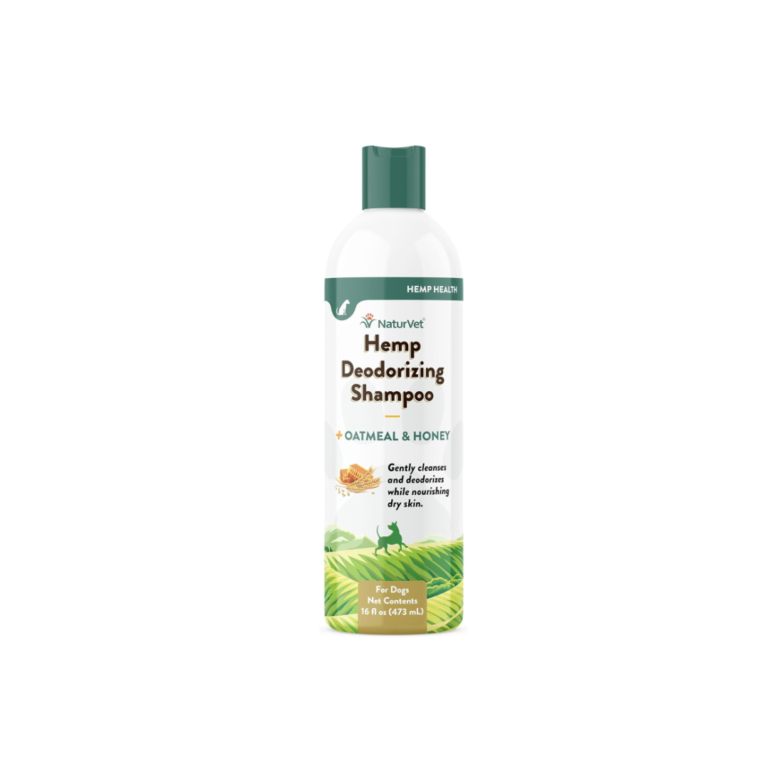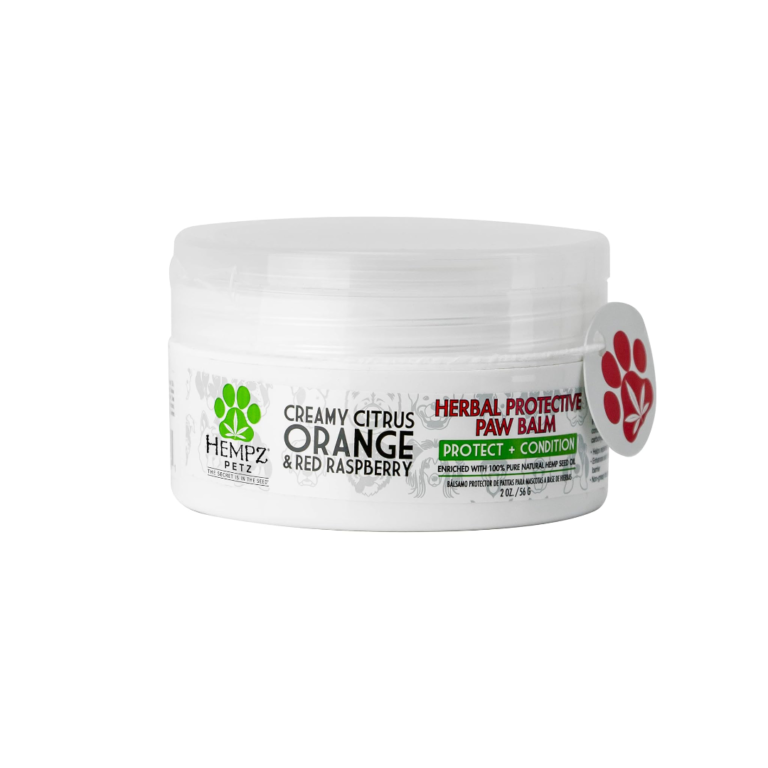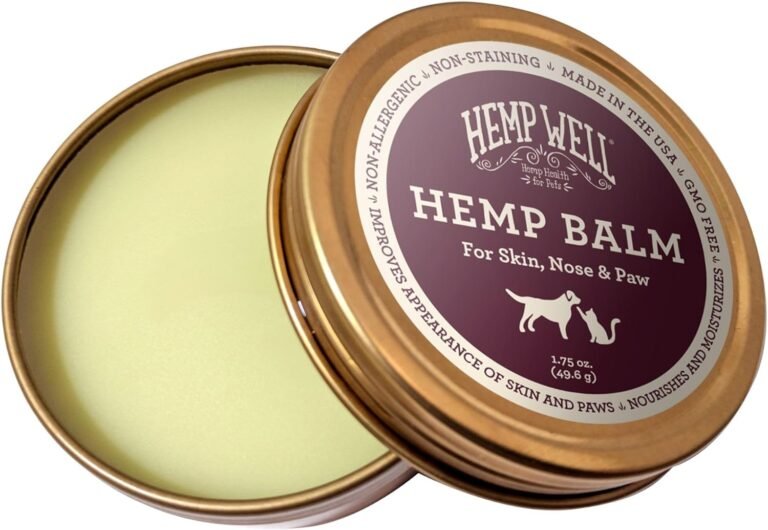Natural Ways to Soothe Your Pet: From Diet to Environment
Naturally, when your furry friend is uncomfortable or unhappy, it makes you unhappy or even worried. You know that if you had itchy skin, you’d try to find a way to solve the problem, and we know you want nothing less for your beloved companion. Unfortunately, you can’t ask your pet what’s wrong or get their help in discovering the source of the itchy skin and all its accompanying discomfort. You can however help your pup recover from the annoying ailment, rule out any larger health issues, and get your friend back to being a happy and healthy companion in no time with these natural remedies and supplements.
Key Takeaways
- Recognize signs of stress in your pet and take steps to create a calm environment for them.
- Provide a balanced diet with nutrient-rich foods and avoid common allergens.
- Engage your pet in physical and mental exercise through interactive play and enrichment activities.
- Create a safe and comfortable space for your pet by designing a cozy bedding area and reducing noise and distractions.
- Use massage techniques, gentle brushing, and acupressure points to soothe your pet and relieve stress.
Understanding Your Pet’s Needs

Recognizing Signs of Stress
As a pet owner, it’s important to review and understand the signs of stress in your furry friend. Pay attention to subtle changes in their behavior, such as increased restlessness, excessive grooming, or loss of appetite. These could be indicators that your pet is feeling stressed or anxious. Additionally, keep an eye out for more obvious signs like aggression, excessive barking, or destructive behavior. If you notice any of these signs, it’s essential to address the underlying cause of stress and provide your pet with the support they need.
To help you better understand your pet’s stress levels, here are some common signs to review:
- Restlessness and pacing
- Excessive grooming or licking
- Loss of appetite
- Increased vocalization
- Changes in litter box habits
Remember, each pet is unique, so it’s important to review their individual behavior patterns and consult with a veterinarian if you have any concerns.
Creating a Calm Environment
Creating a calm environment for your pet is essential for their well-being. Providing the right amount of food is important, as overfeeding can lead to weight gain and health issues, while underfeeding can leave your pet feeling hungry and stressed. It’s crucial to find the balance and ensure your pet is getting the nutrients they need without overindulging. Additionally, setting up a designated quiet area where your pet can retreat to when they need some alone time can help reduce stress. This can be a cozy corner with their bed and toys, away from noise and distractions. Using calming scents, such as lavender or chamomile, can also create a soothing atmosphere for your pet. You can use essential oils or scented sprays specifically designed for pets. These scents have been shown to have a calming effect on animals and can help promote relaxation. Lastly, minimizing loud noises and sudden movements in your pet’s environment can go a long way in creating a calm space for them. Avoid loud music or TV, and try to keep the environment as peaceful as possible.
Establishing a Routine
Establishing a routine is essential for your pet’s well-being. Caring for dry skin is an important aspect of their overall health. Make sure to provide them with a balanced diet that includes essential fatty acids, such as omega-3 and omega-6, which can help improve their skin condition. Additionally, consider using natural remedies like coconut oil or oatmeal baths to soothe their dry skin. It’s also important to establish a regular grooming routine to keep their skin clean and moisturized. Lastly, create a comfortable and quiet space for your pet to relax and sleep, as stress can worsen dry skin conditions.
The Power of a Balanced Diet

Choosing Nutrient-Rich Foods
Considering the nutritional needs of your furry friend is crucial when choosing sustainable dog food. Look for options that provide a balanced diet with essential nutrients like protein, healthy fats, vitamins, and minerals. Protein sources such as high-quality meat or plant-based sustainable protein can offer the necessary amino acids for your dog’s overall health. Ensuring that the sustainable dog food you choose meets your pet’s specific dietary requirements is key. Look for brands that prioritize wholesome ingredients without artificial additives, fillers, or by-products.
Avoiding Common Allergens
When it comes to your pet’s diet, it’s important to be mindful of common allergens that can cause discomfort and health issues. Some of the most common food allergens for dogs include chicken, beef, soy, and wheat. If your dog has food allergies, it’s best to avoid recipes that incorporate multiple protein sources, especially while you are searching for the best allergy-safe option available. For example, if your dog is allergic to chicken, it would be a waste to feed them a food made with both beef and pork. Additionally, ingredients like corn, dairy, and grains can also be allergens for some dogs. To ensure your sensitive pup’s diet is free from these allergens, consider choosing a high-quality dog food that is specifically formulated to meet their dietary needs. One option to consider is Solid Gold’s Buck Wild Sensitive Stomach, Grain-Free Wild Venison & Potato Dry Dog Food, which is made with premium ingredients like New Zealand sourced lamb and easy-to-digest potatoes. This protein-rich diet is well-suited for dogs who need to avoid grain altogether.
Supplementing with Natural Remedies
When it comes to supporting your pet’s health, natural remedies can be a great addition to their diet and lifestyle. One popular option is supplementing with natural remedies, which can provide additional support for your pet’s overall well-being. These remedies are often made from herbs and other natural ingredients that have been used for centuries to promote health and wellness.
One example of a natural remedy is the use of herbal supplements to support your pet’s immune system. These supplements can help strengthen your pet’s immune response and protect against common illnesses. Another option is essential oils, which can be used to promote relaxation and reduce stress in your pet.
It’s important to note that not all natural remedies are safe for pets, so it’s essential to do your research and consult with your veterinarian before introducing any new supplements or treatments. Your vet can help you determine the right dosage and ensure that the remedies you choose are safe and effective for your pet’s specific needs.
In addition to natural remedies, there are also other ways you can support your pet’s health. Regular exercise and a balanced diet are key components of a healthy lifestyle for your pet. Providing your pet with plenty of mental stimulation and creating a calm environment can also help reduce stress and promote overall well-being.
Remember, every pet is unique, and what works for one may not work for another. It’s important to pay attention to your pet’s individual needs and work with your veterinarian to develop a personalized plan for their health and well-being.
Promoting Physical and Mental Exercise

Engaging in Interactive Play
Interactive play is an essential part of keeping your pet happy and healthy. Playing with your pet not only provides physical exercise but also stimulates their mental and emotional well-being. It helps them release energy, reduce stress, and prevent boredom. Here are some tips to make the most out of interactive playtime:
- Rotate different toys to keep things interesting and prevent your pet from getting bored.
- Use toys that encourage problem-solving and mental stimulation.
- Incorporate interactive toys that dispense treats to reward your pet’s efforts.
Remember, interactive play is not only a fun bonding experience but also a great way to provide enrichment and stimulation for your furry friend.
Providing Enrichment Activities
Engaging in interactive play is a great way to keep your pet mentally stimulated and physically active. Peanut butter is a popular treat that can be used to create engaging and challenging activities for your pet. You can stuff a Kong toy with peanut butter and freeze it for a longer-lasting and more rewarding experience. Another idea is to spread a thin layer of peanut butter on a lick mat or puzzle toy, encouraging your pet to use their problem-solving skills to lick it off. These activities not only provide entertainment but also help relieve boredom and reduce anxiety.
Training for Mental Stimulation
Training your pet is not only a great way to teach them new tricks, but it also provides valuable mental stimulation. Engaging in training sessions helps to keep your pet’s mind active and can prevent boredom and cat stress relief. Here are some tips for effective mental stimulation through training:
- Break the training sessions into short, frequent sessions to maintain your pet’s focus.
- Use positive reinforcement techniques, such as treats and praise, to reward your pet for their efforts.
- Introduce new and challenging commands to keep your pet engaged and learning.
- Incorporate interactive toys and puzzles into your training routine to provide additional mental stimulation.
Remember, training should be a fun and positive experience for both you and your pet. By incorporating mental stimulation into your training sessions, you can help keep your pet happy, engaged, and mentally sharp.
Creating a Safe and Comfortable Space

Designing a Cozy Bedding Area
Creating a comfortable and inviting bedding area for your pet is essential for their well-being and quality of sleep. A cozy bed provides a sense of security and helps your pet feel safe and relaxed. Consider these tips to design the perfect bedding area:
- Choose a bed that is the right size for your pet, allowing them to stretch out and curl up comfortably.
- Opt for a bed with soft and supportive materials, such as memory foam or plush fabric, to ensure maximum comfort.
- Place the bed in a quiet and peaceful corner of your home, away from noise and distractions.
- Use calming scents, such as lavender or chamomile, to create a soothing environment.
Remember, a well-designed bedding area will not only help your pet get a good night’s sleep but also contribute to their overall well-being and happiness.
Using Calming Scents
Creating a calming environment for your pet is essential for their well-being. One way to achieve this is by using calming scents. Certain scents, such as lavender and eucalyptus, have been shown to have a soothing effect on animals. You can introduce these scents into your pet’s space by using sachets or essential oil diffusers. Placing a sachet filled with dried lavender or eucalyptus near your pet’s bed can help create a relaxing atmosphere. Additionally, using an essential oil diffuser with a few drops of lavender or eucalyptus oil can provide a gentle and continuous release of these calming scents. Just make sure to use pet-safe essential oils and avoid direct contact with your pet’s skin. Remember, a whisker wellbeing is important for your pet’s overall comfort and happiness.
Reducing Noise and Distractions
Creating a calm and peaceful environment for your pet is essential for their well-being. Noise and distractions can cause stress and anxiety in pets, leading to behavioral issues and health problems. Here are some tips to help reduce noise and distractions:
-
Provide a quiet space: Set up a designated area in your home where your pet can retreat to when they need some peace and quiet. This can be a cozy corner with their bed and toys, away from loud noises and high-traffic areas.
-
Use white noise: White noise machines or calming music can help drown out external sounds and create a soothing atmosphere for your pet.
-
Limit exposure to loud noises: Avoid exposing your pet to loud noises such as fireworks, thunderstorms, or construction sounds. If unavoidable, consider using earplugs or noise-cancelling headphones for your pet.
-
Minimize visual distractions: Close curtains or blinds to reduce visual stimuli that may cause your pet to become anxious or overstimulated.
Remember, creating a calm and quiet environment for your pet is crucial for their overall well-being and happiness. By implementing these strategies, you can help your pet feel safe, relaxed, and stress-free.
The Healing Power of Touch

Massage Techniques for Relaxation
When it comes to massage techniques for relaxation, there are several options you can try with your pet. One technique is gentle stroking along their back and sides, using slow and rhythmic movements. This can help to release tension and promote a sense of calm. Another technique is kneading, which involves using your fingers to gently press and release their muscles. This can help to improve circulation and provide a soothing sensation. Additionally, you can try applying gentle pressure to specific acupressure points on their body, such as the base of their neck or the area between their shoulder blades. This can help to relieve stress and promote relaxation. Remember to always observe your pet’s response and adjust the pressure and technique accordingly.
Here are some tips for a successful massage session:
- Find a quiet and comfortable space where you and your pet can relax.
- Use a gentle touch and listen to your pet’s cues to ensure they are comfortable.
- Start with shorter sessions and gradually increase the duration as your pet becomes more accustomed to the massage.
- Incorporate calming scents, such as lavender, to enhance the relaxation experience.
Remember, regular massage sessions can be a wonderful way to bond with your pet and provide them with a sense of comfort and relaxation.
Gentle Brushing for Bonding
Gentle brushing is not only a great way to keep your pet’s coat looking shiny and healthy, but it can also strengthen the bond between you and your furry friend. Taking the time to brush your pet regularly allows you to relax anxious dogs and provide them with a sense of comfort and security. It’s a calming activity that can help reduce stress and anxiety in both you and your pet.
To make the most of your brushing sessions, here are a few tips:
- Start by choosing a brush or comb that is suitable for your pet’s coat type. This will ensure that you are able to effectively remove any tangles or mats without causing discomfort.
- Find a quiet and comfortable space where you and your pet can relax during the brushing session. This will help create a positive and peaceful environment.
- Use gentle and slow strokes when brushing your pet’s fur. This will prevent any pulling or tugging and make the experience more enjoyable for your pet.
Remember, relax anxious dogs and enjoy the bonding time with your pet while brushing their coat. It’s a simple yet effective way to show them love and care.
Acupressure Points for Stress Relief
Acupressure is a technique that involves applying gentle pressure to specific points on your pet’s body to promote relaxation and relieve stress. It is a non-invasive and natural way to help your pet find relief from anxiety and tension. Here are some acupressure points that you can try on your pet:
- GV 20: Located at the top of the head, this point can help calm the mind and promote a sense of peace.
- LI 4: Found on the back of the paw, between the thumb and index finger, this point is known for its ability to reduce stress and promote overall well-being.
- HT 7: Situated on the inside of the hind leg, just above the hock joint, this point can help alleviate anxiety and promote relaxation.
Remember to apply gentle pressure to these points using your fingertips or the pad of your thumb. Start with light pressure and gradually increase it as your pet becomes more comfortable. If your pet shows any signs of discomfort or pain, stop immediately and consult with a professional.
Tip: Before attempting acupressure on your pet, it’s important to consult with a veterinarian or a certified animal acupressure practitioner to ensure that you are using the correct techniques and applying the right amount of pressure for your pet’s specific needs.
The Healing Power of Touch is a remarkable article that explores the profound impact touch can have on the physical and emotional well-being of our beloved pets. At Whisker Wellbeing, we understand the importance of holistic and natural care for pets, which is why we offer a variety of products designed to enhance their quality of life. From CBD to hemp and other natural options, our products are carefully crafted to promote physical and emotional healing. Visit our website to learn more about how touch and our natural products can improve the health and happiness of your furry friends.
Conclusion
In conclusion, when your pet is uncomfortable or unhappy, it’s natural to want to find ways to soothe them. While you may not be able to ask your pet what’s wrong, there are natural remedies and supplements that can help alleviate their discomfort. By focusing on their diet and environment, you can make a positive impact on their well-being. Choosing natural, whole-food sources and sustainable pet nutrition options not only provides the nutrition they need but also supports eco-friendly agriculture practices. Additionally, considering limited ingredient diets and vegetarian formulas can be beneficial for pets with specific dietary needs or for pet owners looking for ethical and sustainable choices. Gradually transitioning to a new diet and consulting with your vet are important steps to ensure a smooth transition. Remember, your pet’s health and happiness are worth the effort. With these natural ways to soothe your pet, you can help them live a happy and healthy life. So why wait? Start implementing these natural remedies and supplements today!
Frequently Asked Questions
How can I recognize signs of stress in my pet?
Signs of stress in pets can vary, but common indicators include excessive barking or meowing, aggression, changes in appetite or sleep patterns, excessive grooming, hiding, or destructive behavior. It’s important to pay attention to these signs and address the underlying cause of stress.
What can I do to create a calm environment for my pet?
To create a calm environment for your pet, you can provide a quiet and comfortable space for them to retreat to, use calming scents like lavender or chamomile, play soothing music, and minimize loud noises or disruptions.
How can I establish a routine for my pet?
Establishing a routine for your pet can help reduce stress and anxiety. Set regular feeding and exercise times, create a consistent bedtime routine, and provide structured play and training sessions.
What should I consider when choosing nutrient-rich foods for my pet?
When choosing nutrient-rich foods for your pet, look for natural, whole-food sources like sustainably farmed meats, non-GMO vegetables, and grains that support eco-friendly agriculture practices. Pay attention to labels that highlight organic, free-range, or wild-caught ingredients.
How can I avoid common allergens in my pet’s diet?
To avoid common allergens in your pet’s diet, consider a limited ingredient formula that primarily consists of a main protein and a small handful of additional ingredients. Consult with your vet to identify known allergens and choose a suitable diet for your pet.
Are there natural remedies I can use to supplement my pet’s diet?
Yes, there are natural remedies that can supplement your pet’s diet. Some examples include adding omega-3 fatty acids for joint health, probiotics for digestive support, and herbal supplements like chamomile or valerian for calming effects. Always consult with your vet before introducing any new supplements.







